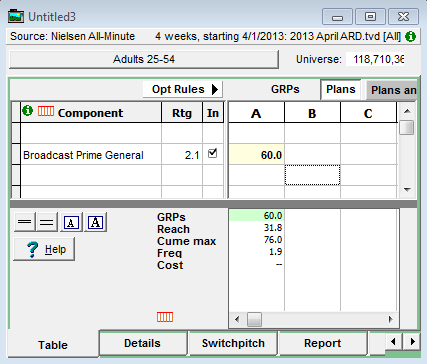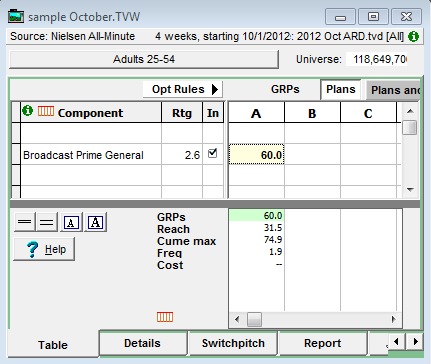Reach Is Higher But Ratings Are Lower?
|
A plan run against April data gets a slightly better reach than it does when using October data. But ratings are higher in October! How can the reach be higher when the ratings are lower? |
A plan for 60 points in October produced a 31.5 reach, and the same plan using April had a slightly higher reach of 31.8. But ratings are higher in October! How can the reach be higher when the ratings are lower?
Here's a simple plan using April data. We find that 60 points produces a 31.8 reach, with a cume potential of 76.0:

Using data from 4 weeks in April
Now let's look at how the same plan performed when using 4 weeks in October. We discover that the reach is now 31.5, with a cume potential of 74.9:

Using data from 4 weeks in October
The reach difference could happen for a lot of reasons.
But look at the rough ratings estimate, which we've added as a column. The rating in October (2.6) is noticeably lower than that for April (2.1). This is reasonable: as the weather gets colder, people tend to spend more time indoors.
So, we have ratings increasing in October, but the reach and cume potential are lower. What's happening here?
Some likely guesses are that in the fall people are settling down to fresh episodes of their favorite shows. Maybe in April they are skipping reruns and sampling more shows on more networks, making them more available, building the cume, and therefore increasing their chance of being reached.
Another possibility is that the audience being added in October and boosting the ratings tend to be somewhat lighter viewers. If that's the case, we'd expect they wouldn't be as likely to try more shows and networks.
